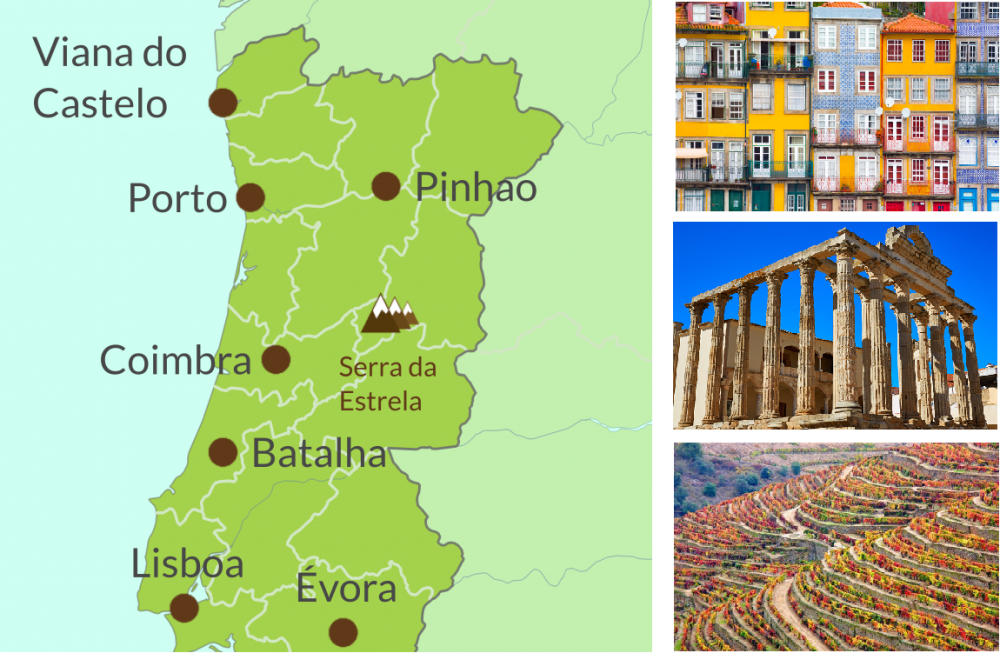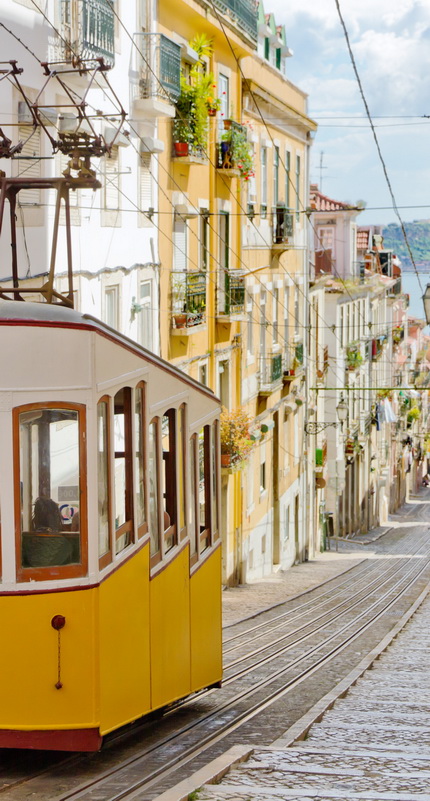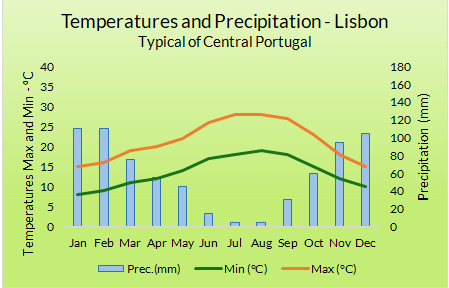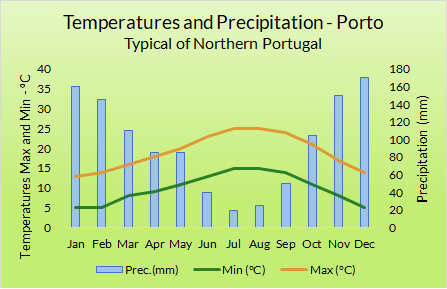
Portugal Holiday Destinations
About touring holidays in Portugal
Small yet full of contrasts and packed with a regional diversity usually found in larger countries, Portugal is the ideal setting for a driving holiday.
Our touring area covers almost the whole country from Lisbon and Évora in the south to the border with Galicia in Spain to the north (though you needn’t stop there…) and can roughly be divided into three main areas:
Northern Portugal, between the Minho and Douro rivers, is largely rural with small villages dotted among the rolling green hills and vineyards. The main city is Porto, set on the Atlantic coast and famous for its fortified wines but the elegant seaside city of Viana do Castelo, and historic Guimaraes and Braga are also well worth a visit. The dramatic Douro Valley is one of the main attractions but the region also boasts the country’s only National Park, the Peneda-Gerés, on the northern border with Spain.
The central region, known as Centro de Portugal, sits south of the Douro and and north of the Tejo river. Its rugged Atlantic coastline is famous for hosting giant-wave surfing championships but offers gentler delights in seaside towns such as San Martinho do Porto, Figueira da Foz and Art-Nouveau Aveiro, Portugal’s own version of Venice. Historic Coimbra, the country’s most ancient and prestigious seat of learning, is the region’s main city though the granite city of Viseu to the north, at the heart of the Dão wine region, is also well worthwhile and in the south the World-Heritage monasteries of Batalha, Obidos and Tomar are not to be missed. Inland the Serra da Estrela mountains are the country’s highest and to the east the Planalto offers a truly unique landscape and a string of historic fortress towns to explore. This little-visited region has so many wonderful experiences to offer!
The southern region covers Lisboa, Portugal’s historic capital, which, with Sintra and Estoril just nearby, has so much to see and do, and northern Alentejo where the World Heritage city of Évora which serves as a base to discover this complex and fascinating wine region with its many towns and villages unspoilt by time. Wander around the fortress towns of Elvás, Monsaraz, Marvão and Castelo Vide, stock up on wine or hand-crafted pottery in El Corval and Redondo or marvel at the marble (sorry) in Vila Viçosa and Estremoz.
Some tours concentrate on one region, providing an in-depth experience of that area, whilst others combine regions allowing you to compare and contrast different parts of the country but either way Portugal’s compact geography means that new and exciting experiences are just around the corner!
Places to visit in Portugal
Main highlights and cities in Portugal

- Lisboa – vibrant capital, full of heritage
- Porto, so much more than Port wines
- Aveiro – the Portuguese Venice
- The breath-taking Douro Valley
- Oldest DOC wines in the world
- Serra da Estrela, granite peaks and glacial lagoons
- Charming Guimaraes
- Gothic monasteries of Batalha, Tomar & Obidos
- Coimbra University, founded in 1290
- Roman Évora, heart of the northern Alentejo
- Wild surf-washed Atlantic coast
- Fortress towns strung along the Spanish border
When to go to Portugal
About the climate in Portugal
The climate in Portugal is quite varied yet its southern position and the proximity of the Atlantic combine to ensure benign conditions year-long throughout most of the country.
The green north is a little cooler and more humid but still enjoys a relatively gentle climate which supports the production of fine wines, Albarinho in the far north and Port & Douro wine in the Douro Valley. The highlands of the Peneda-Gerés National Park and somewhat cooler and the upper Douro Valley can be very hot in summer but in general the region is characterised by its mild climate making it ideal for holidaymakers from March right through to October.
The central region gets progressively warmer as you head south but Atlantic breezes refresh the coastal lands and the high mountains of the Serra da Estrela are always a little cooler (often sporting some snow in winter). The Planalto is very hot and dry in high summer and sharply cold in winter but enjoys a delightful climate away from those extremes. Like the north March through October is the best time to visit.
The south is, as you might expect, the warmest, yet Lisboa and the northern Alentejo don’t see the more extreme sizzling temperatures of the Algarve in the far south and the region is very pleasant for touring from February right through to November, perhaps avoiding the high summer if you don’t like it too hot…


Getting to Portugal
Portugal holiday destinations are well served by air from the UK.
By air
There are two main airports for our Portuguese holidays, which are Porto and Lisbon.
- Porto from Stansted, Luton, Gatwick, Birmingham, Manchester, Bristol and Dublin (and many more UK and International airports).
- Lisboa from Heathrow, Gatwick, Stansted, Luton, Edinburgh, Manchester, Birmingham, Bristol, Edinburgh and Dublin (and many more UK and International airports).
Alternative airports
- Faro in the Algarve region is a good entry point for tours in the Alentejo
- Santiago de Compostela in Spain is a good entry point for northern Portugal tours
*More info – check the ‘Travel’ tab from within any particular tour for the best options for that trip.
Getting around in Portugal
A car is essential for getting around and to make the most out of the visit as many of the hotels and attractions are not easily accessed by public transport.
If travelling by air we usually include a hire car whilst those coming on the ferry will use their own vehicle. In either case we will provide full driving instructions, GPS co-ords for the accommodation and essential information on driving in Spain and Portugal as well as a touring map of the area.
Please ask us if you wish to travel to Portugal with your own car.
Eating and drinking in Portugal
Portuguese cuisine is as rich and varied as its landscape, each region having its own specialities. It shows the legacy of all the different civilizations combined with exotic ingredients obtained through trade routes many moons ago. In other words, fusion cuisine, before modern chefs invented it!
Its hearty, vibrant and sometimes spicy dishes rely on the quality and freshness of locally sourced ingredients, from its “liquid gold” olive oil to the national dish of bacalhao (salt cod) as well as a huge variety of vegetables and fruit.
With their insatiable sweet tooth, the Portuguese are fortunate to have the choice of over two hundred different types of pastries, mostly of Moorish origin and many still made in convents.
Wonderful wines
Altogether there are fourteen wine growing regions in Portugal, the main ones being the Alentejo, a complex region producing elegant, mineral reds and delicious whites; the Douro Valley, the oldest DOC region in the world; the Dão again with some remarkable reds and, in the far north, the Minho region producing fresh, crisp vinho verde and more sophisticated Albarinho whites.
For historical reasons wineries are generally tiny but with modern technology and fermentation methods, they all produce excellent wines, be it a table wine served in a jug or a special reserva.
Port, white or red, is a popular aperitif as is ginjinha, a cherry liqueur and also Madeira.


